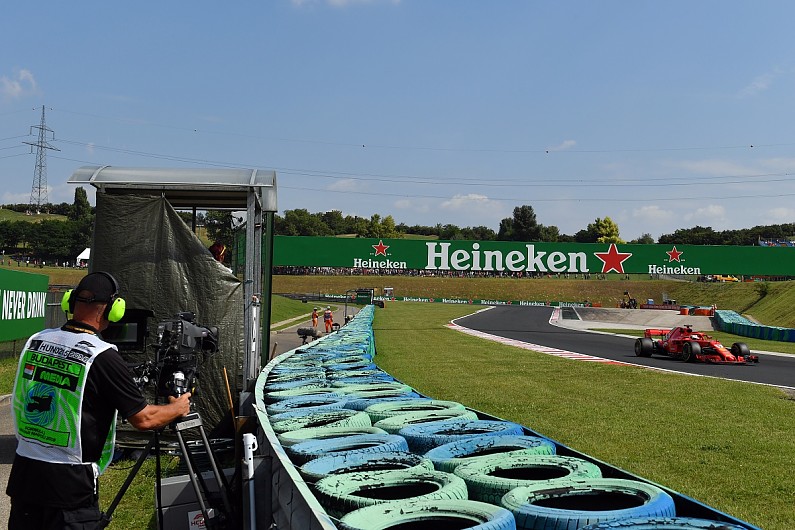Get unlimited access for free
You have only 5 articles remaining to view this month.
Formula 1 is having a major rethink of its trackside television camera strategy for 2019 in order to better translate the speed of the cars to the screen.
The championship’s head of TV and media Dean Locke explained that F1 wants to make the current generation of high downforce cars look more “edgy” for viewers than they have done in the past.
“There’s a big push for 2019 to reflect the speed of the sport, and the pace of the cars,” Locke told Autosport.
F1’s plan to improve its TV coverage
“There’s a rethink on all camera positions. If you’re in the grandstand and watch them, they look incredible, don’t they?
“Camera angles, or lenses, can cheat that quite a lot, and make them look not so dramatic and not quite as quick.
“So we looked at different ways to do that, a few little tricks.
“We’ve always been good at doing whip-pans to show the high speed of the cars, making them look a little bit more edgy in places.
“There were some tracks last year – in Japan for instance – where we really highlighted where these cars are good.”
Work is also continuing on how to broadcast F1 engine sound, which has been problematic since the hybrid era began in 2014, adequately.

“Audio has changed quite dramatically,” Locke added.
“We’ve done a lot more around the car and on the car.
“If you look at the pictures, they tend to be at the front, and the audio out the back. A lot of thought went into that in 2018, and a lot more for 2019.
“It is successful, but at some tracks it’s better than others. The Honda engines sounded really good last year. We’ve done some really exciting stuff on that.”
In another TV development for 2019, F1 has formed a partnership with Amazon Web Services that will enable it to add more strategical elements to its on-screen graphics.
“We’re doing lot of work with AWS and their machine learning capabilities to explain things like the undercut/overcut,” Locke explained.
“We’re using their platform to give us the data, the information, for some graphics.
“It’s a pretty powerful tool, and we’re just touching into it now, what we can achieve or can’t achieve.
“For example, the pitstop strategy – why did they come in, why didn’t they come in?
“We’re relying on a very good commentary team to explain that, which in the UK we’re very lucky to have. You can’t take it for granted in the other 200 territories and over 90 broadcasters.
“We have graphics that can actually explain, ‘He started on those tyres, he’s going to stop then,’ while actually making it more dynamic, because if the VSC comes out it can throw those kind of things out.
“We’re using all the data from Friday and Saturday to come up with that algorithm of what we think will happen.
“If we can explain that in a simple and easy to read manner, it will be a huge win.”
